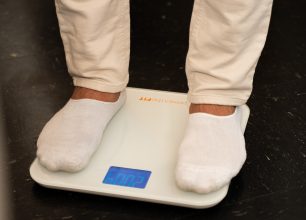The ever-changing reimbursement landscape is making it increasingly difficult for independent orthopedic practices to maintain and grow their income. In addition to rising costs, declining reimbursements complicate physicians’ capacity to provide quality care. As such, ancillary services for orthopedics are becoming an integral part of the practice. In this article, we explore full-service remote patient monitoring as the future of orthopedic ancillaries.
Diversifying Revenue with Ancillary Services for Orthopedics
Ancillary services have long been used to improve the patient experience, reduce costs, and improve health outcomes. From a business perspective, ancillary services can also ensure the long-term viability of a practice by diversifying their income beyond standard reimbursements which have declined in recent years.
For example, one study found that reimbursements for orthopedic foot and ankle surgery decreased by 30% over two decades. At the same time, the prevalence of these procedures has increased, meaning that orthopedic physicians are performing more work for far less income than in years prior.
Ancillary services are supplemental services that integrate with the practice to expand or improve the provision of healthcare. This includes technology such as imaging and diagnostics, therapeutic care, and remote monitoring.
Ancillary services can generate either passive or active income. Passive meaning the physician has minimal involvement, and active meaning the physician is directly involved in providing the service.
Ancillaries are reshaping the orthopedic landscape. Historically, the most common ancillary services used among orthopedic practices to boost revenues and increase convenience for patients include:
- Physical therapy
- MRI/Imaging
- DME programs
- Electromyography
- Surgery centers
- Physician assistants
However, as healthcare costs continue to rise, orthopedic providers need new ways to diversify their practice revenue that will ensure their success well into the future.
Remote Patient Monitoring as an Ancillary Service
More recently, digital health tools such as remote patient monitoring (RPM) have garnered increased interest from physicians of all types. RPM encompasses any technology that collects and transmits patient health data to their care team.
For example, a patient equipped with a wearable device that automatically records heart rate, step count, etc., and transmits the data to their physician electronically. Physicians can then use this data to inform clinical decision making and detect problems more quickly than relying only on in-office visits. Patients benefit as well from the convenience of at-home health monitoring.
As one of the fastest-growing digital health tools, the use of RPM doubled between 2019 and 2022. According to a recent survey from AMA Digital Health Research, physicians are particularly interested in RPM to expand patients’ access to care. In addition, these tools can improve operational efficiency which reduces stress/burnout among staff.
In recent years, the Centers for Medicare and Medicaid (CMS) have introduced four CPT codes for RPM services: 99453, 99454, 99457, and 99458. More information on RPM and related CPT codes can be found in our latest white paper.
The Benefits of RPM for Orthopedics
RPM can be an especially valuable ancillary service for orthopedic practices. Postoperative patients can wear a sensor to track their recovery and detect complications as quickly as possible. Connected care via a mobile app can enable patients to self-report data on symptoms such as pain, mobility, and more. All of which takes place from the comfort of the patients’ home.
With the increased prevalence of obesity among orthopedic patients, another valuable RPM tool for orthopedics are digital weight scales. These tools can help overweight and obese patients track their weight leading up to surgery.
However, a scale alone doesn’t necessarily help patients lose weight. To achieve that end, the practice can explore other options such as virtual health coaching, software platforms, and mobile applications that provide weight loss education and tracking.
Full-Service Remote Patient Monitoring for Orthopedics
Oftentimes, all of these technologies are a single solution: a full-service RPM program. These programs typically operate as a partner company of the practice to provide additional services to patients. The company provides the (HIPAA compliant) devices, software, and support staff required to maintain the program. Meanwhile, the physician uses the resulting data to inform health care decisions.
In addition to helping patients lose weight, which has monumental benefits to their MSK health, the practice can generate a substantial ancillary service revenue stream by partnering with a full-service RPM provider. And because the program is full-service, it can often generate passive or minimally active revenue. In some cases, such as with Prescribe FIT, the practice can begin enrolling patients in 72 hours with no up-front budget and minimal staff time required.
Prescribe FIT is a full-service remote patient monitoring and virtual lifestyle health solution that extends orthopedic care beyond the office to address the root cause of orthopedic patients’ musculoskeletal (MSK) conditions. Our comprehensive solution helps patients decrease weight, reduce pain, and improve mobility through simple changes to nutrition, physical activity, and lifestyle.
Published on November 17, 2022

